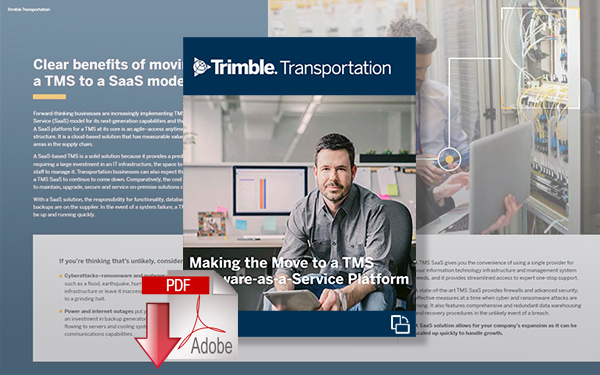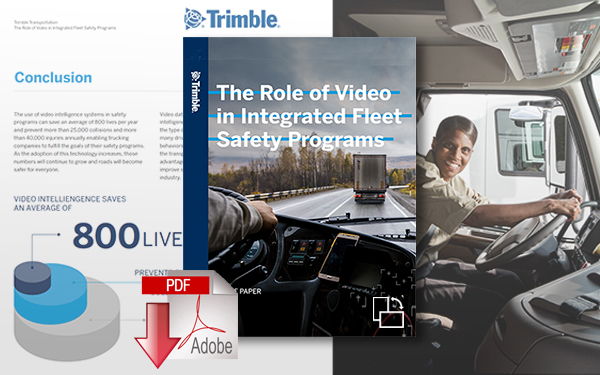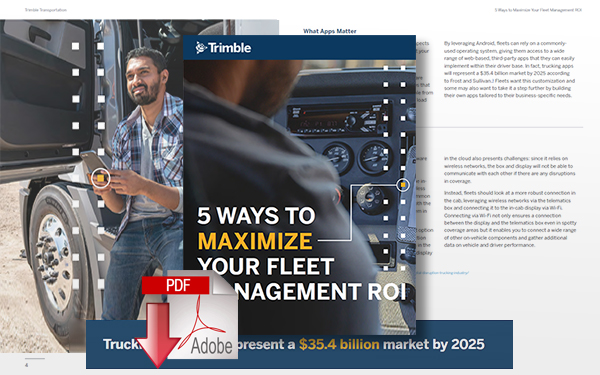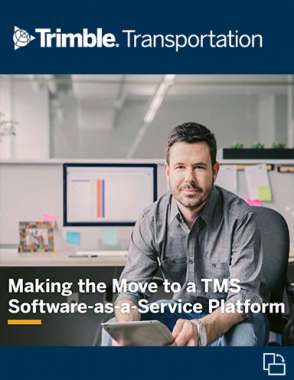Transportation & Logistics Companies Gain Significant Benefits from Technology Investments

Transitioning a trucking or logistics enterprise to a virtual work environment was not an overnight process, but as companies gained momentum they also found ways to scale their operations to maximize efficiencies.
Pandemic Paybacks
Surface transportation and logistics companies reap significant rewards from technology investments.
When transportation companies abruptly closed their offices in March 2020, they entered a new era of technology.
Moving employees to remote work environments suddenly made it necessary to automate all workflows that had person-to-person touchpoints, like paper documents.
As the pandemic wore on, digitization strategies took a different turn. Companies had to scale their operations to grow despite equipment and labor shortages.
Leveraging new technology helped companies post record profits, but more recently the focus has shifted to optimizing resources and winning the fight against inflation and the softening freight market.
Remote Virtues
To enable remote work, companies had to use more than video conferencing tools like Zoom when it became clear the trend would last.
When Carbon Express shut its physical office in March 2020, the fleet’s Chief Executive Officer Steve Rush - a former chairman of the National Tank Truck Carriers association (2010) - said management “learned to accept” remote work. Soon, the Wharton, NJ-based tanker fleet embraced it.
Management promoted a driver to the dispatcher as soon as the pandemic hit. The employee continued to work remotely. “We knew once we let that go that we would have other dispatchers ask. So, we have other dispatchers working from home,” Rush said. Recently, the company trained another driver to work from his Oklahoma home as a dispatcher. “That opened the door to us hiring a dispatcher anywhere,” he said.
Pivoting to remote work turned out to be a blessing in disguise for the transportation industry. Many companies are now recruiting office talent nationwide, said John Elliott, chief executive of Load One, a Taylor, MI-based expedited carrier, and freight management provider. Elliott currently serves as chairman of the Truckload Carriers Association.
Connecting and Scaling Up
Transitioning a trucking or logistics enterprise to a virtual work environment was not an overnight process, but as companies gained momentum they also found ways to scale their operations to maximize efficiencies.
Carbon Express uses the TMWSuite transportation management system. Its dispatchers and other remote workers have full-featured access to planning and visibility tools to optimize driver schedules. The company incentivizes dispatchers to get drivers home and minimize hotel expenses.
The company pays for hotels when drivers are on the road since it uses day cabs to maximize payload.
“The technology really helps us,” Rush said. “We can see things better and manage things better.” Besides using technology to optimize driver routes, Carbon Express has invested in drivers to give them all the tools they need to do their jobs better, said Rush - from video telematics to collision avoidance and roll stability systems. New hires typically come from DL schools and is trained “our way” from the start, Rush explained.
Making Time Count
Time is the most essential valuation metric of fleet profitability. During the last 2.5 years of pandemic-fueled disruptions, motor carriers have been searching for tools to better utilize their finite resources.
Many fleets have restructured driver pay during the pandemic to smooth time-based factors that drivers do not control, such as waiting in traffic or at customer locations. Salaries and guaranteed hourly pay programs have risen in popularity.
A small but growing number of fleets are now paying drivers by the hour, to ensure that all time is accounted for.
“It has always been an upsell getting drivers to understand [hourly pay],” said Jason Eisenman, vice president of safety and human resources for Liquid Trucking. The 190-truck, Plattsmouth, NE-based tank carrier has been paying by the hour since 2012. “It takes lots of education and coaching to hire and pay by the hour.”
Liquid Trucking gets drivers up to speed quickly. Accompanying each paycheck is an easy-to-use Load Summary report that shows all the time for each load, broken down by driving, loading, unloading, and tank washouts.
The Load Summary report pulls data from SQL tables in the company’s TMW Suite transportation management system, which has arrival and departure data captured by the fleet’s in-cab mobility system. Liquid Trucking pays drivers $30 per hour for all drive time and $30 for the first hour that drivers are waiting at customer or tank wash locations. Drivers make $20 per hour for the second and hours waiting. First-year drivers earn more than $90,000 per year, he says.
Closely tracking drivers’ time waiting at customer and tank wash locations has advantages. Liquid Trucking discovered that:
- Load times increased by 17% from 2019 to 2020.
- Unload times increased by 10% in the same period.
- Tank wash times increased by an hour, on average, from 2019 to 2022.
Liquid Trucking recently used wait time data to file a report with the IRS. The effort will result in reimbursement for additional pay expenses incurred during the height of the pandemic from Employee Retention Credits (ERC). To qualify for ERC, businesses must prove factors related to Covid negatively impacted employee pay by at least 10%.
“One of those ways is through studying times that drivers spent waiting,” Eisenman said. “We did that by pulling ‘stop count’ data from TMW.Suite.”
Truckers News Survey
When applying for a job, what do the following salary options have for your decision to apply?
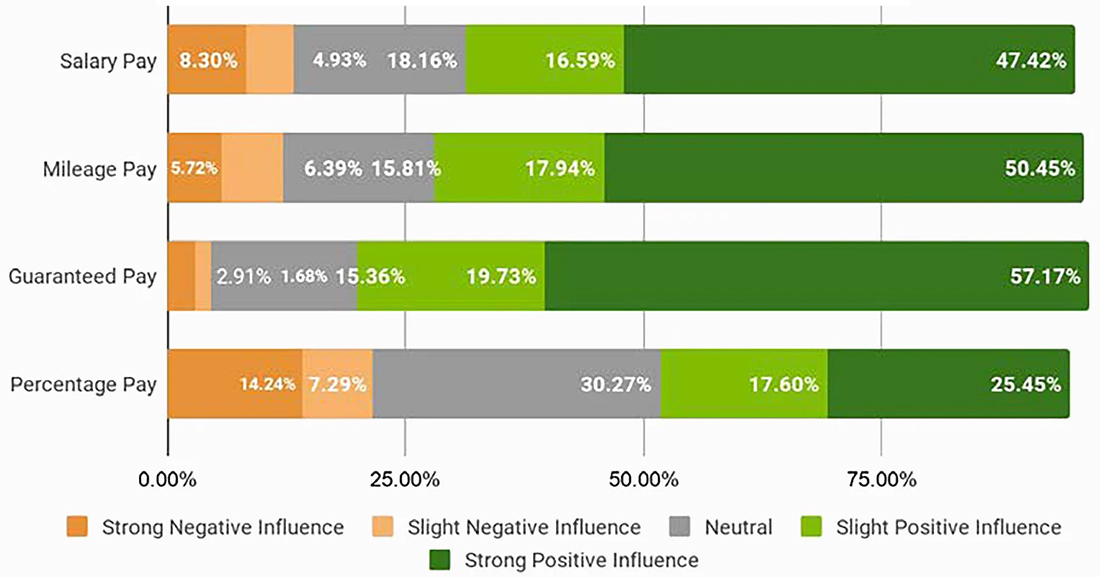
Fleets offering guaranteed driver-pay programs had a strong recruiting pitch during the pandemic, according to a March 2021 Truckers News Survey.
Course Correction
As fleets continue to adopt technology to scale their operations for growth, newfound efficiencies are helping them fight inflation and weather a possible economic downturn.
The dry van spot market ended 2021 with rates 46% higher than the national average of the four years leading up to the pandemic. Good fortune continued through Q1 of 2022. The truckload rate per mile was 25.2% above the January 2018 baseline and 15% higher than the same quarter in 2021.
In June 2022, dry van linehaul spot rates excluding fuel fell below $2 a mile for the first time since August 2020, according to DAT Freight & Analytics. Contract freight rates have been holding steady, however.
American Trucking Associations’ seasonally adjusted (SA) For-Hire Truck Tonnage Index increased by 2.7% in June after rising 0.3% in May. ATA Chief Economist Bob Costello said the jump indicates the freight market is in a state of transition from spot to contract, with ATA’s tonnage index dominated by contract freight.
“Essentially, the market is transitioning back to pre-pandemic shares of contract versus spot market,” he said.
Trends Fueling the Future
Historic freight demand and crimped supply during the last 2.5 years of the pandemic caused freight rates to hit records in 2021. Many people decided to give trucking a try. The FMCSA authorized nearly 110,000 new for-hire trucking companies in 2021, an increase of 85% from the previous high.
The freight market began to normalize in 2022. Load postings in mid-July were down 21% from the previous year, but were still 51% higher than in 2018, according to DAT Freight & Analytics. Aside from a banner year in 2021, motor carriers of all sizes invested heavily in technology, especially SaaS - where the software is owned, delivered, and managed within a remote cloud network. Gartner forecasting expects SaaS offerings to reach $176.6 billion in end-user spending this year.
Meanwhile, pandemic-fueled disruptions sparked interest in technology startups in the US supply chain. Last year, 53 private equity deals in the sector accounted for $20 billion in value, far more than the $7.9 billion from 37 deals in 2020, according to analytics firm PitchBook Data.
New technology solutions will likely find fertile ground, especially if supply chain and labor challenges are here for the long haul. A mid-year DHL report surveyed thousands of small and medium-sized businesses and found:
- 62% expect supply chain delays to be their most difficult challenge for the rest of the year
- 42% said logistics costs are the biggest supply chain challenge
- Only 38% have not been negatively impacted by talent shortages.
Thinning the Herd
The course correction is hitting single-truck operators and small fleets the hardest, with record fuel prices adding to their woes. Many small carriers are disadvantaged from not investing in technology to operate at scale, Elliott said.
“Unfortunately, I do believe there will be a thinning of the herd,” he said. Carbon Express’ Steve Rush believes some freight brokers are putting the squeeze on small carriers as spot market rates are sliding. “I have a real issue with that,” he said. When owner-operators go out of business, “what are [brokers] going to do?”
As a fuel hauler, Carbon Express has set revenue records for nine consecutive months. Business in August has slowed a little, so “we’ll see where all this goes,” he said. “But it has been very strong.”
Load One’s John Elliott is cautiously optimistic about the next few months. “The crystal ball is incredibly cloudy right now,” he said. The freight market should remain strong because motor carriers did not add much capacity over the past two years because of equipment manufacturing backlogs, he noted. No matter what lies ahead, lessons learned and applied during the pandemic - to be nimble and invest in technology to operate at a greater scale and efficiency - will continue paying dividends.
Related Resources
Making the Move to a Transportation Management System Software-as-a-Service Platform
Making the Move to a TMS Software-as-a-Service Platform - Your guide to understanding the value and benefits of moving to a TMS SaaS now. Download Now!
The Role of Video in Integrated Fleet Safety Programs
In this guide, we explore how video is often mistakenly considered to be a surveillance and investigation tool and how it can actually play a much bigger role in your integrated safety program. Download Now!
5 Ways to Maximizing Your Fleet Management ROI
This informative and educational guide showcases five key considerations to ensure you get the most out of your fleet management technology - both for your needs today and in anticipation of your needs in the months and years ahead. Download Now!
More Resources from Trimble
Read the Article: Mitigating Risk and Improving Trucking Safety with Enhanced Video Intelligence
Article Topics
Trimble News & Resources
Trimble acquires Transporean in major deal, for nearly $2 billion Transportation & Logistics Companies Gain Significant Benefits from Technology Investments Making the Move to a Transportation Management System Software-as-a-Service Platform 4 Reasons Your Fleet Needs Video Technology Guide to Maximizing Your Fleet Management ROI Connected Maintenance and its Role in the Supply Chain Mitigating Risk and Improving Trucking Safety with Enhanced Video Intelligence More TrimbleLatest in Transportation
Why are Diesel Prices Climbing Back Over $4 a Gallon? Luxury Car Brands in Limbo After Chinese Company Violates Labor Laws The Three Biggest Challenges Facing Shippers and Carriers in 2024 Supply Chain Stability Index: “Tremendous Improvement” in 2023 Trucking Association CEO on New Biden Policy: ‘Entirely Unachievable’ Two Weeks After Baltimore, Another Cargo Ship Loses Power By Bridge Examining the freight railroad and intermodal markets with Tony Hatch More Transportation

